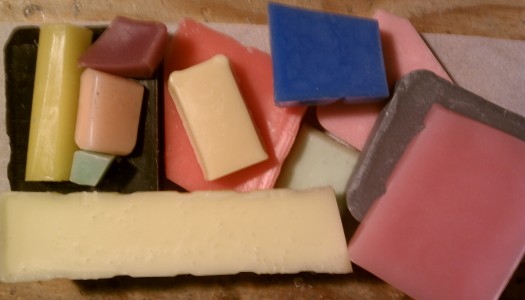So, how green is your ski wax?
I don’t mean whether you regularly backcountry ski in temperatures so cold and on snow so abrasive that you mainly use green- and blue-colored ski wax instead of the warmer hues associated with softer waxes. But rather, what is the environmental impact of your ski wax?

Can you tell which wax is not synthetically derived?
I have to admit that I had never thought of this question previously, even during the most random mind wanderings during the most long tedious skintracks and backcountry skiing climbs. But Green Wax asks, “When your wax eventually wears off, where did that wax go?” I haven’t the slightest idea as to the answer, but I was drawn in by this question to the website’s informative and entertaining FAQ, which no doubt will delight my Pacific Northwest ski partners with confirmation of Sasquatch’s existence (though dodging the question of whether Green Wax will allow me to out run him — must be the lawyers overruling). Also, it has come to my attention that two of southern New England’s premier rando race training venues (i.e., the two nearby ski areas Berkshire East and Wachusett that tolerate my dawn-patrol skinning) are on board with Green Wax.
Green Wax is said by the maker to be “a proprietary blend of naturally sustainable ingredients” so who knows what’s really in this stuff, but the company seems trustworthy so I’ll believe their story. During hot waxing the Green Wax fumes were a bit odorous yet still in line with many other brands of synthetic waxes in my quiver. And when rubbed on skins it was a bit on the harder side compared to other universal-temperature waxes, but still okay for that purpose. As a test of sorts, I hot waxed one ski with Green Wax and another with some random traditional “universal” hydrocrabon wax. At the end of my outing (which entailed a couple skin laps), I didn’t notice any differences. So in other words, certainly seems fine to me, although I highly doubt it would be as fast as fluorinated temperature-specific waxes in difficult snow conditions.
Like pretty much all waxes, the Green Wax price is rather high when bought in small quantities, but I see no point in buying small quantities of a universal ski wax, so for 12 ounces (340 grams) the price is a reasonable $39 when ordered directly. So hey, by itself it won’t allow you to save the Earth (from whomever or whatever is threatening its existence) or win the Hahnenkamm, but might help your lungs in the ski room and might help reduce your environmental impact outside, and much cheaper than the products I typically review, so worth a try and certainly a nice little gift for a skier who already has (almost) everything.
WildSnow guest blogger Jonathan Shefftz lives with his wife and daughter in Western Massachusetts, where he is a member of the Northfield Mountain and Thunderbolt (Mt. Greylock) ski patrols. Formerly an NCAA alpine race coach, he has broken free from his prior dependence on mechanized ascension to become far more enamored of self-propelled forms of skiing. He is an AIARE-qualified instructor, NSP avalanche safety instructor, and contributor to the American Avalanche Association’s The Avalanche Review. When he is not searching out elusive freshies in Southern New England, he works as a financial economics consultant.
